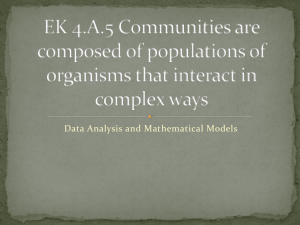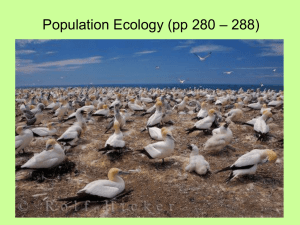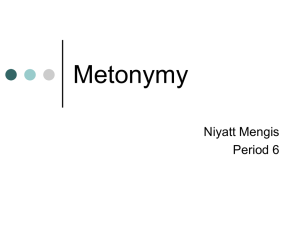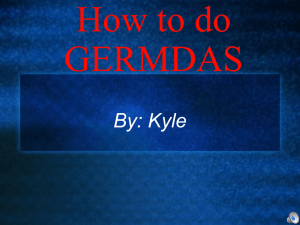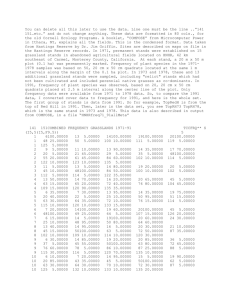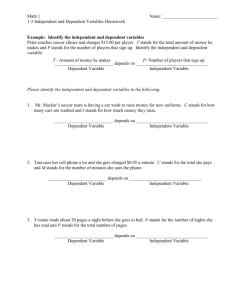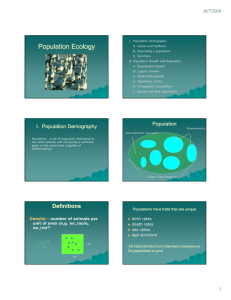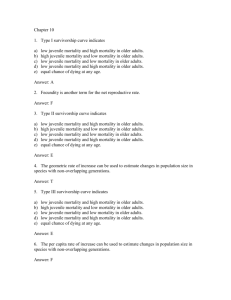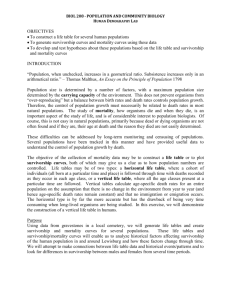Battleship Answers
advertisement
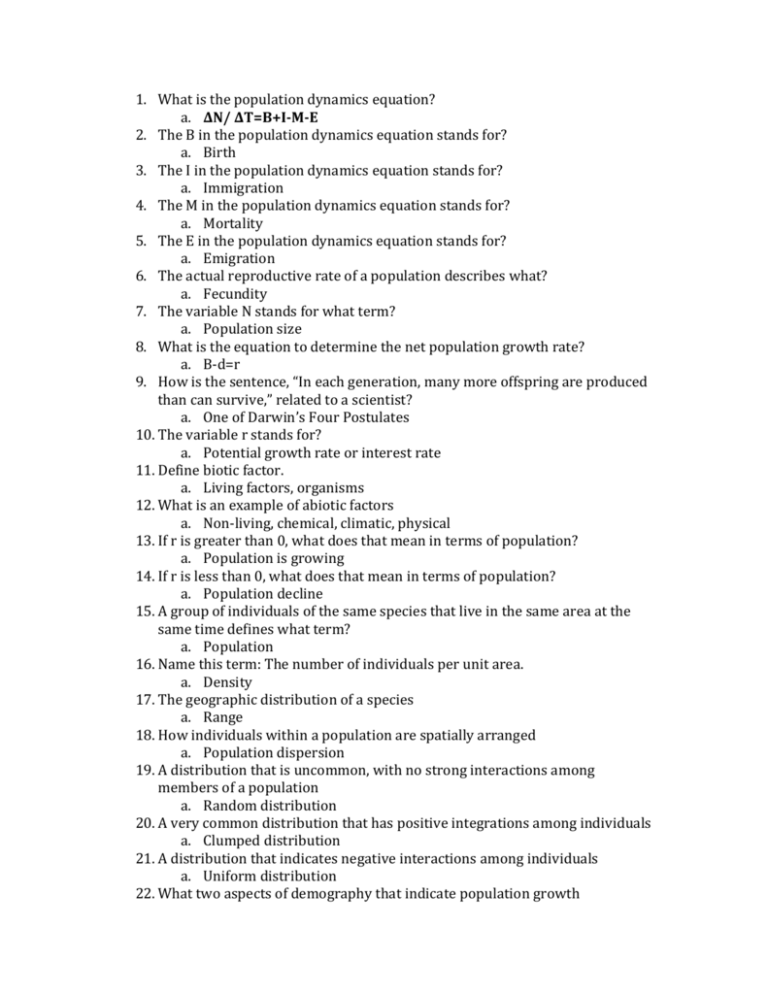
1. What is the population dynamics equation? a. ΔN/ ΔT=B+I-M-E 2. The B in the population dynamics equation stands for? a. Birth 3. The I in the population dynamics equation stands for? a. Immigration 4. The M in the population dynamics equation stands for? a. Mortality 5. The E in the population dynamics equation stands for? a. Emigration 6. The actual reproductive rate of a population describes what? a. Fecundity 7. The variable N stands for what term? a. Population size 8. What is the equation to determine the net population growth rate? a. B-d=r 9. How is the sentence, “In each generation, many more offspring are produced than can survive,” related to a scientist? a. One of Darwin’s Four Postulates 10. The variable r stands for? a. Potential growth rate or interest rate 11. Define biotic factor. a. Living factors, organisms 12. What is an example of abiotic factors a. Non-living, chemical, climatic, physical 13. If r is greater than 0, what does that mean in terms of population? a. Population is growing 14. If r is less than 0, what does that mean in terms of population? a. Population decline 15. A group of individuals of the same species that live in the same area at the same time defines what term? a. Population 16. Name this term: The number of individuals per unit area. a. Density 17. The geographic distribution of a species a. Range 18. How individuals within a population are spatially arranged a. Population dispersion 19. A distribution that is uncommon, with no strong interactions among members of a population a. Random distribution 20. A very common distribution that has positive integrations among individuals a. Clumped distribution 21. A distribution that indicates negative interactions among individuals a. Uniform distribution 22. What two aspects of demography that indicate population growth a. Births and immigration 23. What two aspects of demography that indicate population decline a. Mortality and emigration 24. Which survivorship curve has low infant mortality and long life spans a. Type 1 25. Which survivorship curve has mortality as relatively independent of age a. Type 2 26. Which survivorship curve has high infant mortality and only few have long lives a. Type 3 27. What is a trade-off of rapid maturation a. Small adult size 28. What is a trade-off of many offspring a. Small offspring 29. The study of how organisms interact with each other and their environment describes? a. Ecology 30. Includes G1, S-phase, and G2 of the cell cycle a. Interphase 31. How do fungi feed? a. By absorption 32. A proposed explanation that will be later tested and is falsifiable a. Hypothesis 33. What division has the product of four daughter cells that have only half the number of chromosomes of the parent cell? a. Meiosis 34. An individual that has two of the same allele of a particular gene is said to be? a. Homozygous 35. In life cycles with alternation of generations, the next step after gametes is? a. Fertilization 36. True or False – Lichens are protists a. False 37. A nuclear envelope is apart of which domain a. Eukarya 38. All cells come from cells is apart of what theory a. Cell theory 39. The oxygen revolution stated because of what organism? a. Cyanobacteria 40. Name one of the phylum that has segmentation a. Annelids, Arthropods, Chordates 41. Which circulatory system is more efficient a. Closed 42. The endoderm germ layer gives rise to what? a. Digestive tract 43. What are the stages of complete insect metamorphosis a. Egg, Larva, Pupa, Adult 44. Roses are included in what category of plants? a. Angiosperms 45. A flower part in 4s and 5s describes what angiosperm group? a. Dicots 46. Flowers and fruit are characteristics of angiosperms. What’s one of the two other main characteristics? a. Double fertilization, Coevolution
